Legendary Ynglings: Descendants Of The Norse Gods And Oldest Scandinavian King Dynasty
Ellen Lloyd - AncientPages.com - Norse legends tell the legendary Ynglings were descendants of the Norse gods and the oldest known Scandinavian King dynasty. In ancient times, they ruled as mighty kings in Sweden and Norway.
 The Yngling Ingjald slaying his kinsmen. Image credit: Hugo Hamilton (1802–1871). Teckningar ur Skandinaviens Äldre Historia. Stockholm: Gjöthström & Magnusson. (Digitalized by Martling Bok & Grafik.)
The Yngling Ingjald slaying his kinsmen. Image credit: Hugo Hamilton (1802–1871). Teckningar ur Skandinaviens Äldre Historia. Stockholm: Gjöthström & Magnusson. (Digitalized by Martling Bok & Grafik.)
Did these people really exist? Historians are divided on this subject. Norwegians consider the Ynglings real historical figures, but in Sweden, the Ynglings have remained mythological. Their existence is still a subject shrouded in mystery.
It isn't easy to understand the Yngling King Dynasty because these people are only mentioned in a few old sources, and very little information could shed more light on their history.
Ynglinga Saga And The Arrival Of The Norse Gods In Scandinavia
In the Ynglinga Saga, Snorri Sturluson (1179 – 1241), a famous Icelandic historian, describes the arrival of the Norse gods to Scandinavia and how Freyr founded the Swedish Yngling dynasty at Gamla Uppsala, one of the most important, sacred ancient Viking and Pagan sites in Sweden.
The saga related the line of Swedish kings until Ingjald (Ingjald illråde), after which the descendants settled in Norway and became the ancestors of the Norwegian King Harald Fairhair.
 Yngve-Frej, the father of the Ynglings. Image credit: Skandinaviens Äldre Historia. Stockholm: Gjöthström & Magnusson
Yngve-Frej, the father of the Ynglings. Image credit: Skandinaviens Äldre Historia. Stockholm: Gjöthström & Magnusson
Harald Fairhair reigned from c. 872 to 930 and is today recognized as the first King of Norway.
The Ynglings were later followed by the House of Munsö, a Swedish dynasty whose first ruler was the legendary and famous Viking Bjorn (Björn) Ironside.
The Ynglings are also mentioned in Saxo Germanicus, Beowulf, referred to as Scyling. Ynglings claimed descent from the god Freyr. They supposedly subdued most of Sweden between 500 and 700 AD.
In his saga, Sturluson writes that they may have been descended from a man called Skelfir, thus, were more appropriately called Skalfings.
One page from the Heimskringla tells the story of the Ynglings.
Christian Icelanders wrote down the stories trying to explain this by saying the Norse gods were ordinary people who became worshiped as gods after their death. Few subscribe to this theory today.
Were The Ynglings Descendants Of The Vanir Gods?
In our article about Asgard – The Ancient Powerful Kingdom Of The Norse Gods, we briefly discussed the relationship between two main groups of Norse gods.
In Old Norse Mythology, the Aesir are the principal gods of the pantheon.
For some time, another tribe of gods, the Vanir, shared this place with the Aesir. However, these two groups of gods fought a long and bloody war, ultimately leading to only a few of the Vanir living in Asgard.
There is little information about this ancient war, but we are told that the Vanir were fertility deities ruling over land and sea, and the Aesir were associated with war, magic, and the sky. The differences between these two groups must have led to disputes and battles.
In the book Iron Age Myth and Materiality: An Archaeology of Scandinavia AD 400-1000, Lotte Hedeager, Professor of Archaeology and Head of the Department of Archaeology, Conservation, and History at the University of Oslo, Norway, explains that the royal Yngling dynasty descended from the Vanir gods.
Tacitus (born 56 AD—died c. 120 AD), a Roman senator and historian, described a Germanic tribe of the Ingaevones who, according to old traditions, descended from a son of Mannus ('man). He was the one who gave them the name. According to Professor Hedeager, myths about Germanic peoples' sacred descent are recorded from the time of Tacitus to the High Middle Ages.
The problem with the Age of Migration or the Dark Ages is very few primary sources exist for the tribes who were migrating around Europe, and it's difficult to trace these ancient people's routes and settlements.
Can Archaeology Confirm The Existence Of The Ynglings?
Certain archaeological excavations at Gamla Uppsala provide little evidence of the Ynglings.
While excavating the Royal Mounds at this ancient sacred site, scientists discovered human remains that, according to Swedish archaeologist Birger Nerman, were the bones belonging to Aun, Egil och Adils, three men who were Ynglings. Other mounds at the sire were also believed to contain remains of the Ynglings Royal Dynasty.
 Royal mounds at Gamla Uppsala, Sweden. Image credit: Henri Osti
Royal mounds at Gamla Uppsala, Sweden. Image credit: Henri Osti
However, it must be stated that these ancient human remains have not been adequately investigated, and scientists have not officially confirmed Ynglings were buried at Gamla Uppsala.
The legendary Ynglings remain a fascinating subject, and stories about these people are a mixture of myths, legends, and historical facts.
Written by Ellen Lloyd – AncientPages.com
Updated on November 15, 2023
Copyright © AncientPages.com All rights reserved. This material may not be published, broadcast, rewritten or redistributed in whole or part without the express written permission of AncientPages.com
Expand for referencesSnorri Sturlason, Heimskringla or The Chrinicleof the Kings of Norway
Swedish books and magazines
Lotte Hedeager - Iron Age Myth and Materiality: An Archaeology of Scandinavia AD 400-1000
Johan Lindström - Sveriges Långa Historia
More From Ancient Pages
-
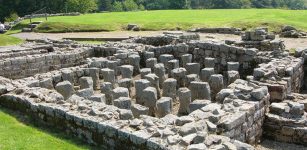 Vindolanda Wooden Tablets: Ancient Military And Private Correspondence Left By Departing Roman Troops
Civilizations | Apr 17, 2016
Vindolanda Wooden Tablets: Ancient Military And Private Correspondence Left By Departing Roman Troops
Civilizations | Apr 17, 2016 -
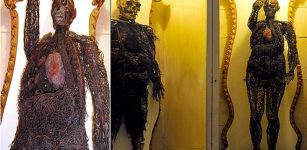 Incredible Anatomical Human Machines – Two Fleshless Bodies Mystery
Featured Stories | Jul 24, 2018
Incredible Anatomical Human Machines – Two Fleshless Bodies Mystery
Featured Stories | Jul 24, 2018 -
 Magnetic Fields Used To Explore Doggerland And Other Prehistoric Submerged Sites
Archaeology | Mar 10, 2023
Magnetic Fields Used To Explore Doggerland And Other Prehistoric Submerged Sites
Archaeology | Mar 10, 2023 -
 Oxygen Spike Coincided With Ancient Global Extinction
Archaeology | Sep 3, 2021
Oxygen Spike Coincided With Ancient Global Extinction
Archaeology | Sep 3, 2021 -
 Tomb of Patriarchs In Hebron Was Used And Visited By Pilgrims 2,700 Years Ago – New Study
Archaeology | Jul 10, 2020
Tomb of Patriarchs In Hebron Was Used And Visited By Pilgrims 2,700 Years Ago – New Study
Archaeology | Jul 10, 2020 -
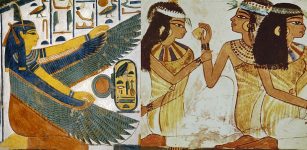 Ancient Egyptian Women Had Equal Rights As Men – Egyptian Cosmology And Goddess Maat Reveal Why
Ancient History Facts | Dec 18, 2017
Ancient Egyptian Women Had Equal Rights As Men – Egyptian Cosmology And Goddess Maat Reveal Why
Ancient History Facts | Dec 18, 2017 -
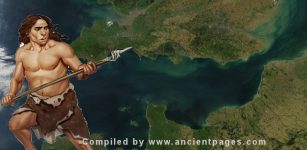 Undiscovered Neanderthal Artifacts From The Ice Age Are Submerged Below The Waves Of The English Channel
Archaeology | Nov 23, 2022
Undiscovered Neanderthal Artifacts From The Ice Age Are Submerged Below The Waves Of The English Channel
Archaeology | Nov 23, 2022 -
 Myth Of The Pale Sun Followed By A Catastrophe Confirmed By Archaeologists
Featured Stories | Sep 22, 2024
Myth Of The Pale Sun Followed By A Catastrophe Confirmed By Archaeologists
Featured Stories | Sep 22, 2024 -
 Ancient Chinese Version Of Quipu -Tradition Of Tying Knots Dates Back To Antiquity
Civilizations | Mar 15, 2017
Ancient Chinese Version Of Quipu -Tradition Of Tying Knots Dates Back To Antiquity
Civilizations | Mar 15, 2017 -
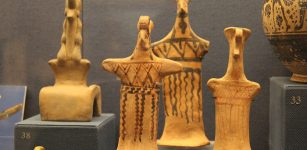 Mycenaean Culture Used Lignite For Their Kilns 3,000 Years Ago – Surprising Discovery Reveals
Archaeology | Jan 25, 2022
Mycenaean Culture Used Lignite For Their Kilns 3,000 Years Ago – Surprising Discovery Reveals
Archaeology | Jan 25, 2022 -
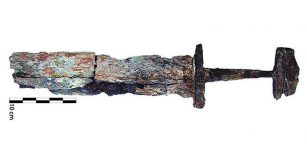 Viking Sword Found In Patara May Have Belonged To A Varangian Guard
Archaeology | Nov 22, 2018
Viking Sword Found In Patara May Have Belonged To A Varangian Guard
Archaeology | Nov 22, 2018 -
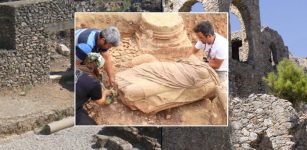 Roman-Era Female Statue Dated Back To 1,800 Years Ago Unearthed In Anemurium, Türkiye
Archaeology | Nov 14, 2023
Roman-Era Female Statue Dated Back To 1,800 Years Ago Unearthed In Anemurium, Türkiye
Archaeology | Nov 14, 2023 -
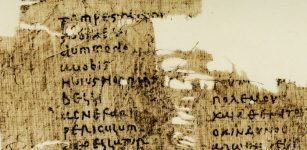 Scientists Unravel Secrets From Ancient Latin Papyrus And Shed New Light On The Roman World
News | Jan 11, 2023
Scientists Unravel Secrets From Ancient Latin Papyrus And Shed New Light On The Roman World
News | Jan 11, 2023 -
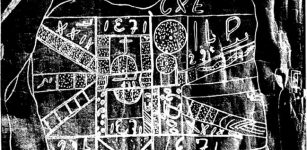 Undeciphered Ancient Stone Maps With Mysterious Signs May Hold Key To The Spider Rock Treasure
Artifacts | Apr 29, 2014
Undeciphered Ancient Stone Maps With Mysterious Signs May Hold Key To The Spider Rock Treasure
Artifacts | Apr 29, 2014 -
 Archaeologists Discover Mysterious Floor Made Of Bones In Alkmaar, Netherlands
Archaeology | Dec 23, 2024
Archaeologists Discover Mysterious Floor Made Of Bones In Alkmaar, Netherlands
Archaeology | Dec 23, 2024 -
 Why Was An Ancient High-Ranking Woman Buried Within The Abandoned Khar Nuur Fortress, Mongolia?
Archaeology | Aug 22, 2024
Why Was An Ancient High-Ranking Woman Buried Within The Abandoned Khar Nuur Fortress, Mongolia?
Archaeology | Aug 22, 2024 -
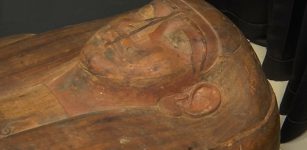 ‘Empty’ Egyptian Coffin Kept In Museum Contained A 2,500-Year-Old Mummy
Archaeology | Mar 31, 2018
‘Empty’ Egyptian Coffin Kept In Museum Contained A 2,500-Year-Old Mummy
Archaeology | Mar 31, 2018 -
 Royal Tombs Of Alexander The Great’s Family At Vergina, Greece Finally Identified
Archaeology | Jan 31, 2024
Royal Tombs Of Alexander The Great’s Family At Vergina, Greece Finally Identified
Archaeology | Jan 31, 2024 -
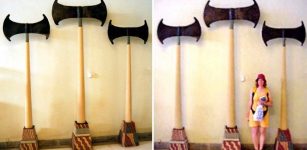 Giant Ancient Minoan Axes Used For Unknown Purposes
Artifacts | Nov 27, 2017
Giant Ancient Minoan Axes Used For Unknown Purposes
Artifacts | Nov 27, 2017 -
 Spectacular Square-Headed Creature And 143 New Nazca Geoglyphs – Discovered
Archaeology | Nov 19, 2019
Spectacular Square-Headed Creature And 143 New Nazca Geoglyphs – Discovered
Archaeology | Nov 19, 2019


